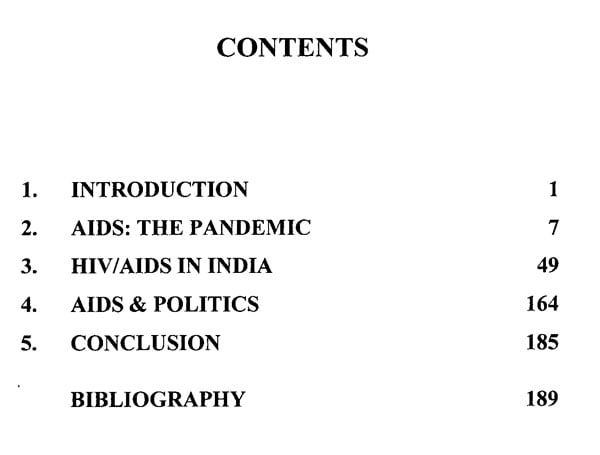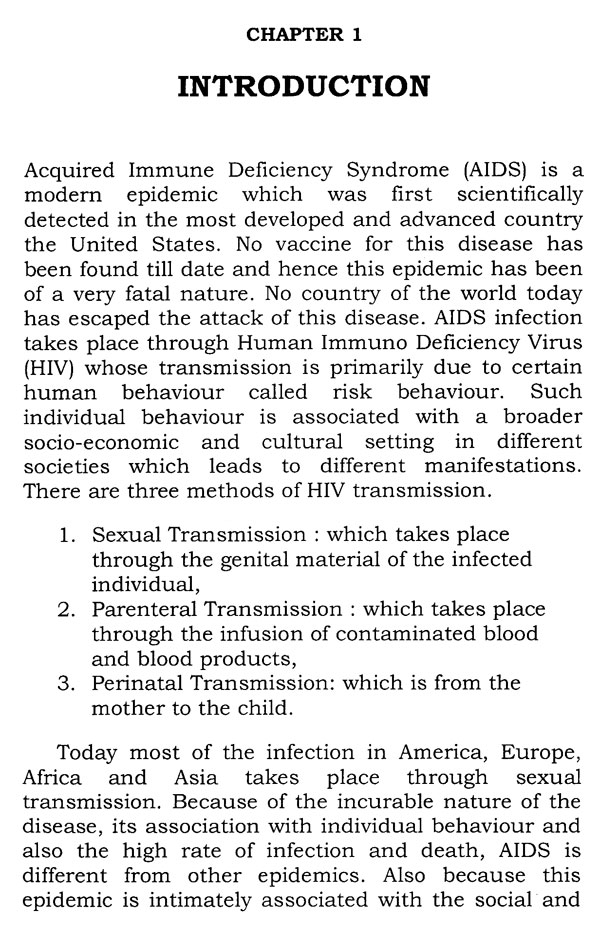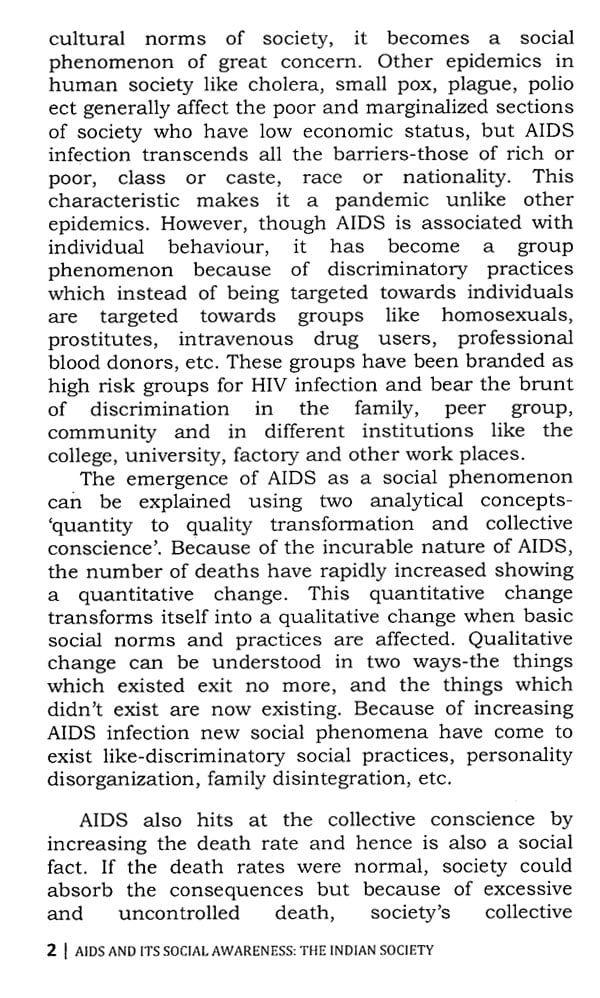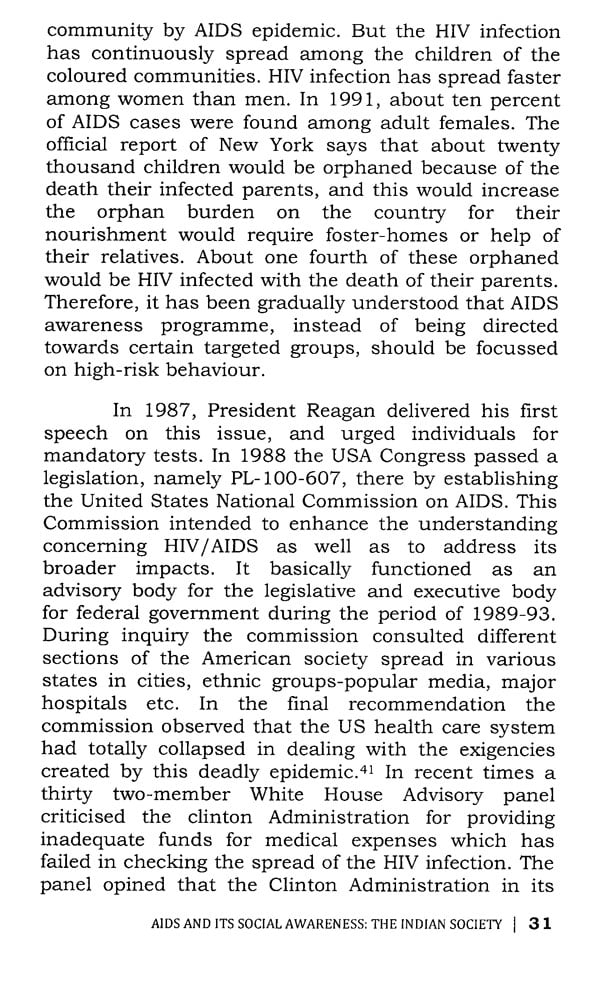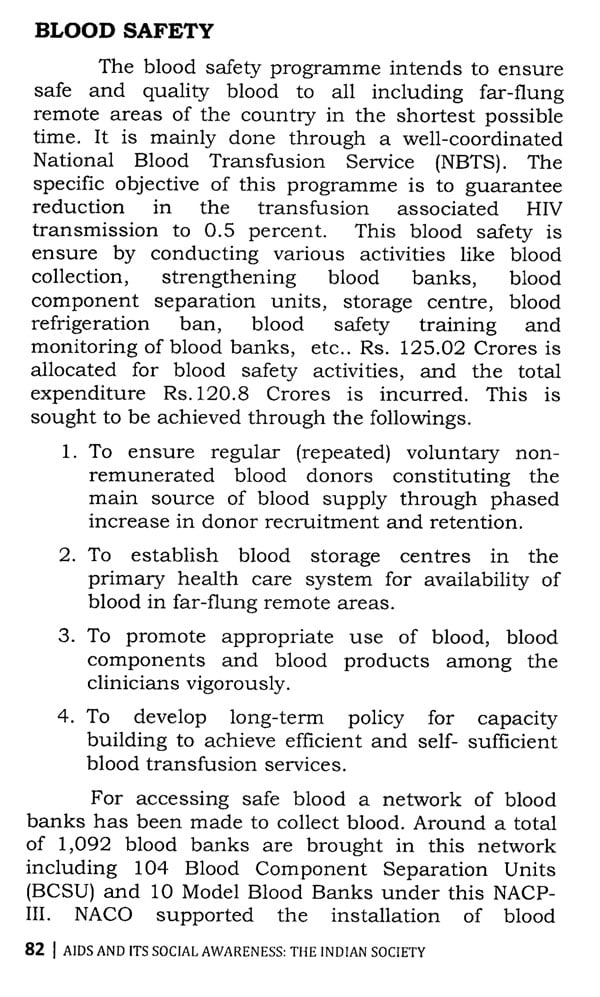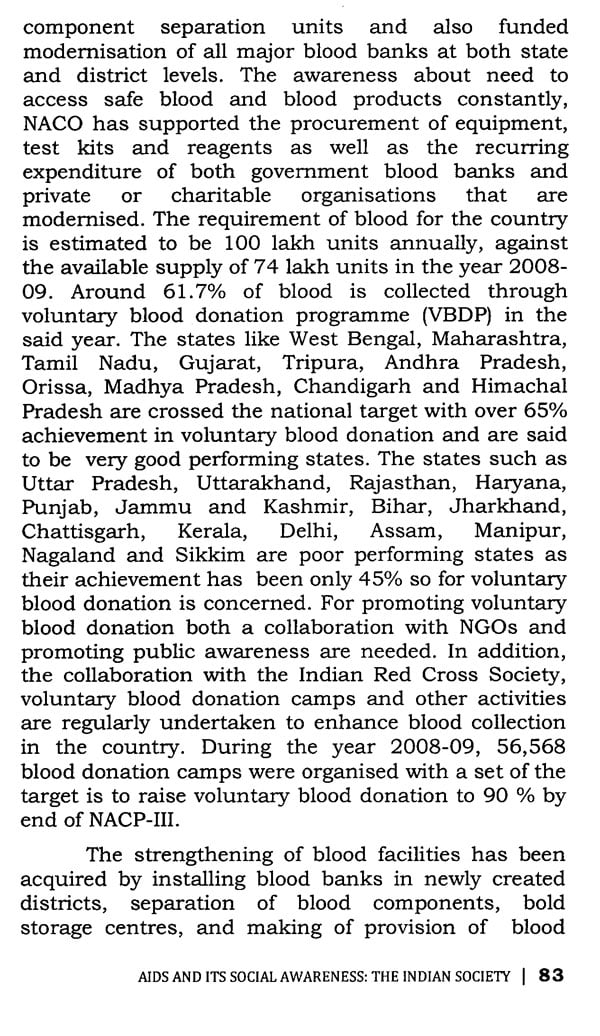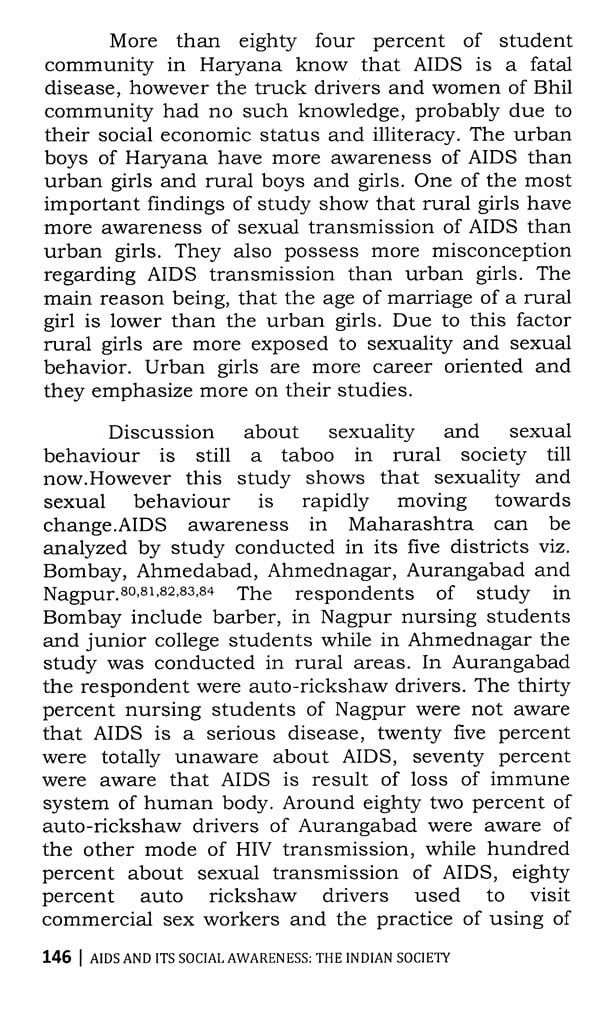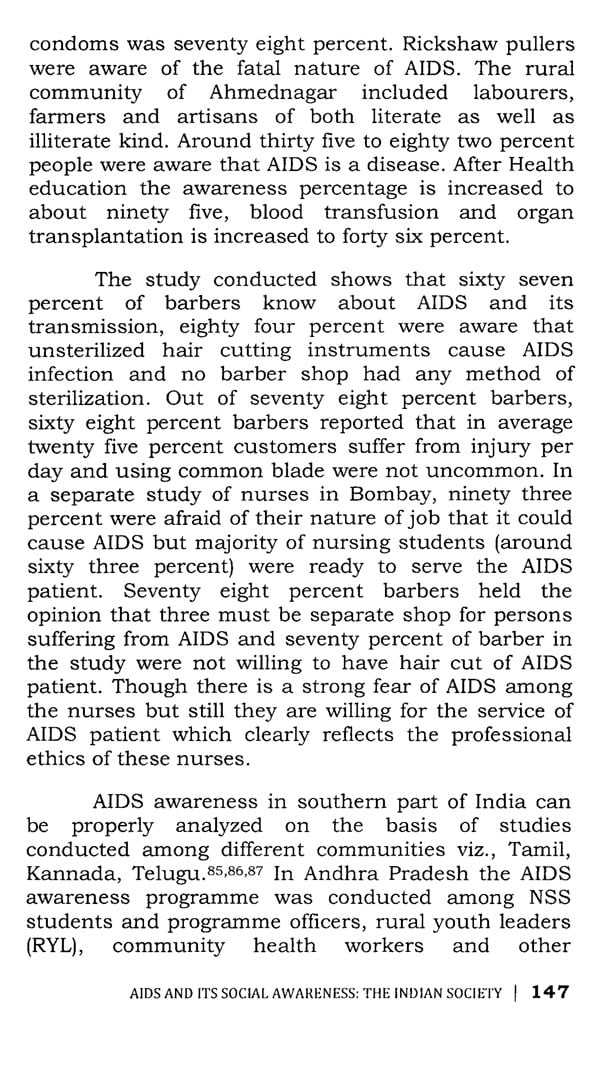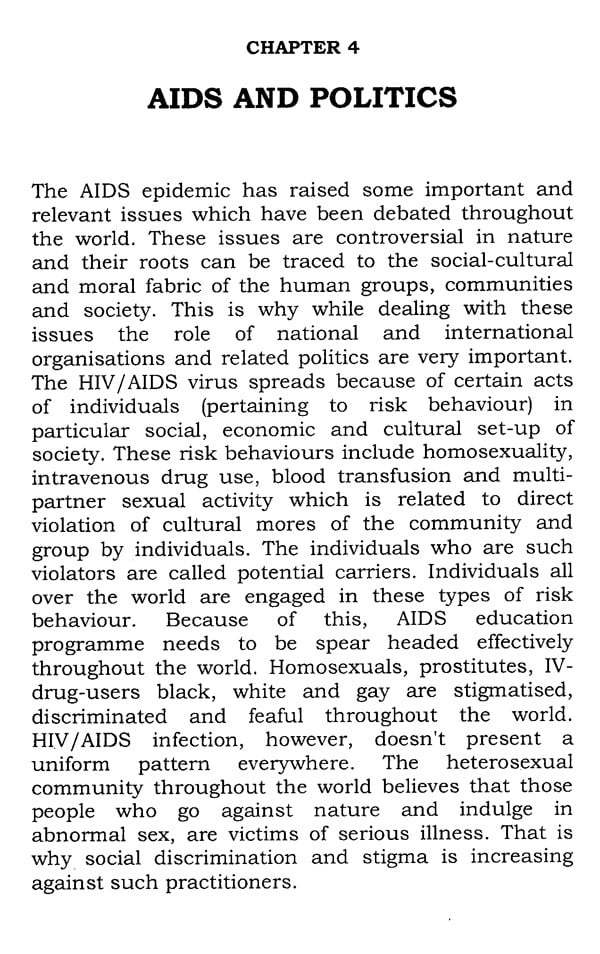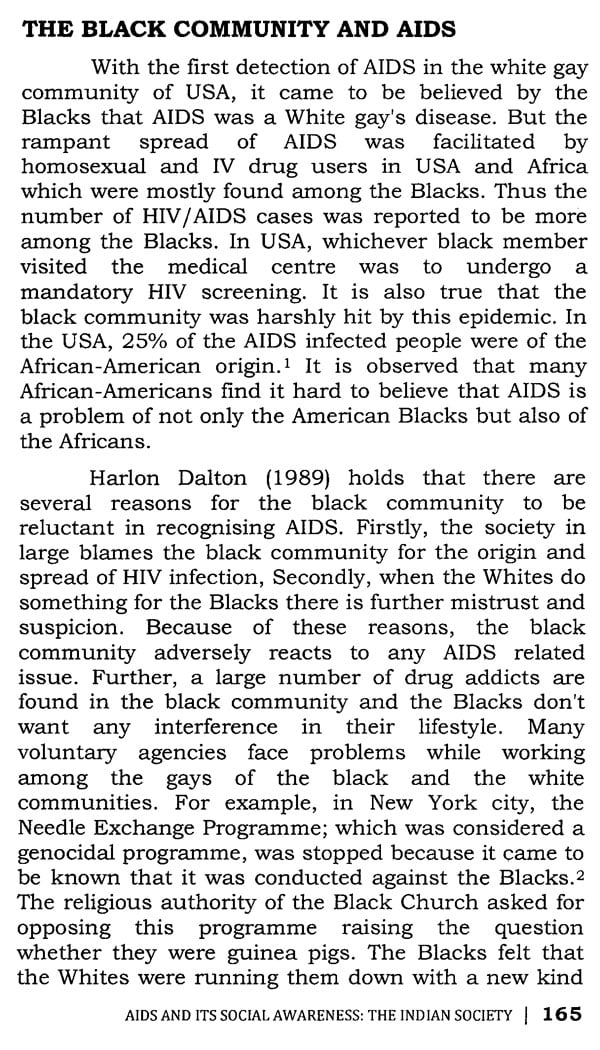
AIDS and Its Social Awareness : The Indian Society
Book Specification
| Item Code: | NAV693 |
| Author: | Haresh Narayan Pandey |
| Publisher: | Luminous Books, Varanasi |
| Language: | English |
| Edition: | 2016 |
| ISBN: | 9789385149696 |
| Pages: | 214 |
| Cover: | HARDCOVER |
| Other Details | 9.00 X 6.00 inch |
| Weight | 450 gm |
Book Description
AIDS is the most fatal disease experienced across the world. Prevention is suggested as the first and the last cure for it. AIDS is a modern epidemic which was first scientifically detected in the most developed and advanced country i.e. USA. No country of the world today has escaped the attack of this disease. Because of its association with individual behaviors this epidemic is intimately associated with the social and cultural values and norms of society, which makes it a social phenomenon of great concern. But in a developing country like India where the social, cultural and economic factors are conducive to the spread of HIV infection, the importance of the need for social awareness increases. And I hope this study would be helpful to various groups of academicians, teachers, students, policy makers and activists in many ways.
Started his academic journey in Social. Sciences at undergraduate and postgraduate level courses from University of Lucknow, Uttar Pradesh and shifted to New Delhi for pursuing higher education and completed M. Phil and Ph.D. from Jawaharlal Nehru University (JNU). For his teaching carrier he joined Central University of Gujarat (CUG), Gandhinagar, Gujarat in 2009 and came to Central University of Bihar (CUB) but no Central University of South Bihar (CUSB), Gaya, Bihar in 2012. He contributed to the several national and international forums from time to time. The areas like modernisation globalisation, culture, identity development, health, gender environment and technology are of hi high research interest.
Acquired immune Deficiency Syndrome (AIDS) is the most fatal disease experienced across the world. Prevention is suggested as the first and the last cure for it. It can be brought in through spreading social awareness at massive level. AIDS is a modern epidemic which was first scientifically detected in the most developed and advanced country i.e. USA. No vaccine for this disease has been found till date and hence this epidemic has been of a very fatal nature. Even if vaccine has been discovered then it is very costly so unaffordable by common people. No country of the world today has escaped the attack of this disease. AIDS infection takes place through Human Immuno Deficiency Virus (HIV) whose transmission is primarily due to certain human behaviour, which is called risk behaviour. And such individual behaviour is associated with a broader socio-economic and cultural setting in different societies which leads to different manifestations. There are three methods of HIV transmission---Sexual Transmission, takes place through the genital material of the infected individual; Parenteral Transmission, takes place through the infusion of contaminated blood and blood products; and Perinatal Transmission, happens from the mother to the child. Today most of the infection across the world takes place through sexual transmission. Because of its association with individual behaviour this epidemic is intimately associated with the social and cultural norms of society, which makes it a social phenomenon of great concern. Other epidemics in human society like cholera, small pox, plague, polio etc. generally affect the poor and marginalized sections of society who have low economic status, but AIDS infection transcends all the barriers-those of rich or poor, class or caste, race or nationality. This characteristic makes it a pandemic unlike other epidemics. However, AIDS has become a group phenomenon because of discriminatory practices, which instead of being targeted towards individuals are targeted towards groups like homosexuals, prostitutes, intravenous drug users, professional blood donors, etc. These groups have been branded as high risk groups for HIV infection and bear the brunt of discrimination in the family, peer group, community and in different institutions like the college, university, factory and other work places. But in a developing country like India where the social and cultural factors are conducive to the spread of HIV infection, the importance of the need for social awareness increases. The factors that play a positive role in the spread of the disease are the pressure of high rate of population growth, high • rate of illiteracy and unemployment, unequal distribution of resources, low level of agricultural and industrial production, poor level of life expectancy, high rate of labour migration, poor health infrastructure, prevalence of high rate of STDs, etc. Also, the prevalence of traditional socio-cultural values in Indian society and the low socio-economic status of woman prevent open discussion about sexuality and sexual behaviour among couples. It has been noted that in India more than 80% of the infected people are from the socially and economically productive population i.e. the age group of fifteen to fifty years. All these factors make the need for social awareness emergent. The study of AIDS problem with special reference to India can be relevant and fruitful. It is conducted mainly by taking stock of the larger situation regarding HIV/AIDS and its awareness in India. Thus an in-depth understanding of AIDS and its social awareness in Indian society is the primary objective of this study. For the requisite information, only the secondary sources of data collection have been resorted to. And I hope this study would be helpful to academicians, teachers, students, policy makers and activists in many ways.
**Contents and Sample Pages**
